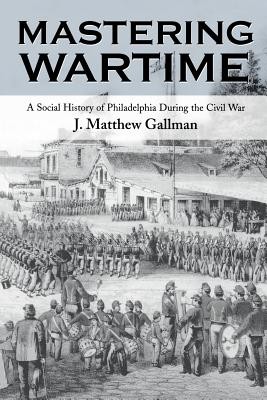
- We will send in 10–14 business days.
- Author: J Matthew Gallman
- Publisher: University of Pennsylvania Press
- ISBN-10: 0812217446
- ISBN-13: 9780812217445
- Format: 15 x 22.6 x 2.3 cm, softcover
- Language: English
- SAVE -10% with code: EXTRA
Reviews
Description
Mastering Wartime is the first comprehensive study of a Northern city during the Civil War. J. Matthew Gallman argues that, although the war posed numerous challenges to Philadelphia's citizens, the city's institutions and traditions proved to be sufficiently resilient to adjust to the crisis without significant alteration. Following the wartime actions of individuals and groups-workers, women, entrepreneurs-he shows that while the war placed pressure on private and public organizations to centralize, Philadelphia's institutions remained largely decentralized and tradition bound.
Gallman explores the war's impact on a wide range of aspects of life in Philadelphia. Among the issues addressed are recruitment and conscription of soldiers, individual responses to wartime separation and death, individual and institutional benevolence, civic rituals, crime and disorder, government contracting, and long-term economic development. The book compares the wartime years to the antebellum period and discusses the war's legacies in the postwar decade.EXTRA 10 % discount with code: EXTRA
The promotion ends in 19d.16:48:48
The discount code is valid when purchasing from 10 €. Discounts do not stack.
- Author: J Matthew Gallman
- Publisher: University of Pennsylvania Press
- ISBN-10: 0812217446
- ISBN-13: 9780812217445
- Format: 15 x 22.6 x 2.3 cm, softcover
- Language: English English
Mastering Wartime is the first comprehensive study of a Northern city during the Civil War. J. Matthew Gallman argues that, although the war posed numerous challenges to Philadelphia's citizens, the city's institutions and traditions proved to be sufficiently resilient to adjust to the crisis without significant alteration. Following the wartime actions of individuals and groups-workers, women, entrepreneurs-he shows that while the war placed pressure on private and public organizations to centralize, Philadelphia's institutions remained largely decentralized and tradition bound.
Gallman explores the war's impact on a wide range of aspects of life in Philadelphia. Among the issues addressed are recruitment and conscription of soldiers, individual responses to wartime separation and death, individual and institutional benevolence, civic rituals, crime and disorder, government contracting, and long-term economic development. The book compares the wartime years to the antebellum period and discusses the war's legacies in the postwar decade.

Reviews